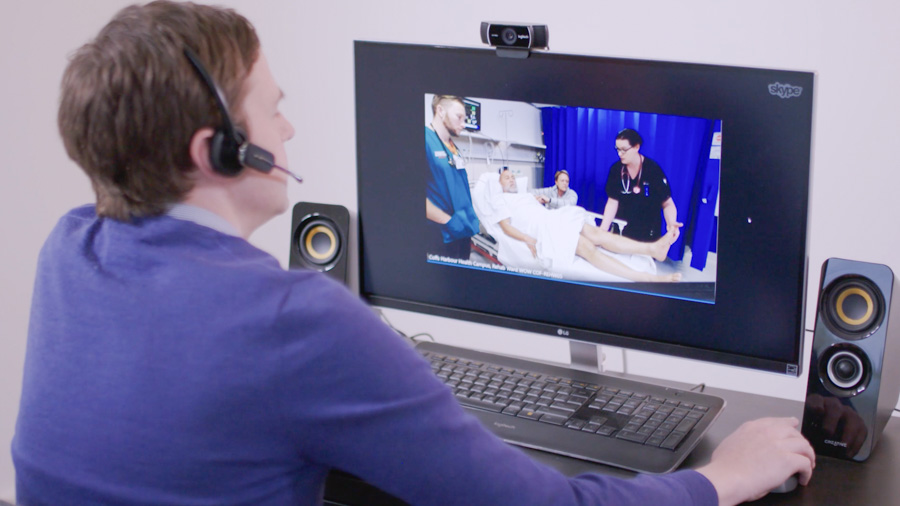NSW Telestroke Service: Hundreds of patients in year one
More than 500 rural and regional patients have benefited from world-class rapid stroke assessment, treatment and management via The NSW Telestroke Service, hosted by Prince of Wales Hospital (POWH), in its first year of operations.
Since 16 March 2020, Telestroke has saved lives and improved outcomes at hospitals in Port Macquarie, Coffs Harbour, Lismore, Orange, Dubbo, Bathurst and Shoalhaven. The Telestroke service will roll out to up to 23 sites by June 2022.
The service connects stroke specialists with local emergency physicians to determine the best possible treatment plan for patients.
Professor Ken Butcher, Medical Director of Telestroke and Director Clinical Neuroscience, POWH, said the service bridges more than just geographical distances in the fight against stroke, which is one of Australia’s biggest killers and a leading cause of disability.
“The state-wide launch of Telestroke last year coincided with the outbreak of COVID-19, which demonstrated how well this model of care can work during the pandemic and beyond,” Mr Butcher said.
“Every year, around 19,000 residents in NSW have a stroke and more than a third live in regional, remote or rural areas. Using Telestroke, our clinicians can deliver better outcomes for patients exhibiting signs of stroke by harnessing this cutting-edge technology – irrespective of location.”
Melinda Laverick, a 52-year-old teacher from Coffs Harbour, woke up on 27 November 2020 with trouble speaking and a blinding headache – she was experiencing a stroke.
“I live alone so I called my friend and colleague Trina,” Ms Laverick said.
“She called an ambulance which took me to Coffs Harbour Hospital, where I had brain scans which via Telestroke were seen in seconds by stroke specialists at Prince of Wales Hospital.
“They prescribed immediate clot-busting medication which meant that by the time I was transferred to John Hunter Hospital in Newcastle, surgery wasn’t even necessary. The care I received was extraordinary.
“Because I was lucky enough to be treated via Telestroke, I have returned to work and I feel better than I have in years.”
The timeliness of Ms Laverick’s treatment meant she has now made a full recovery and emerged with no lasting effects.
